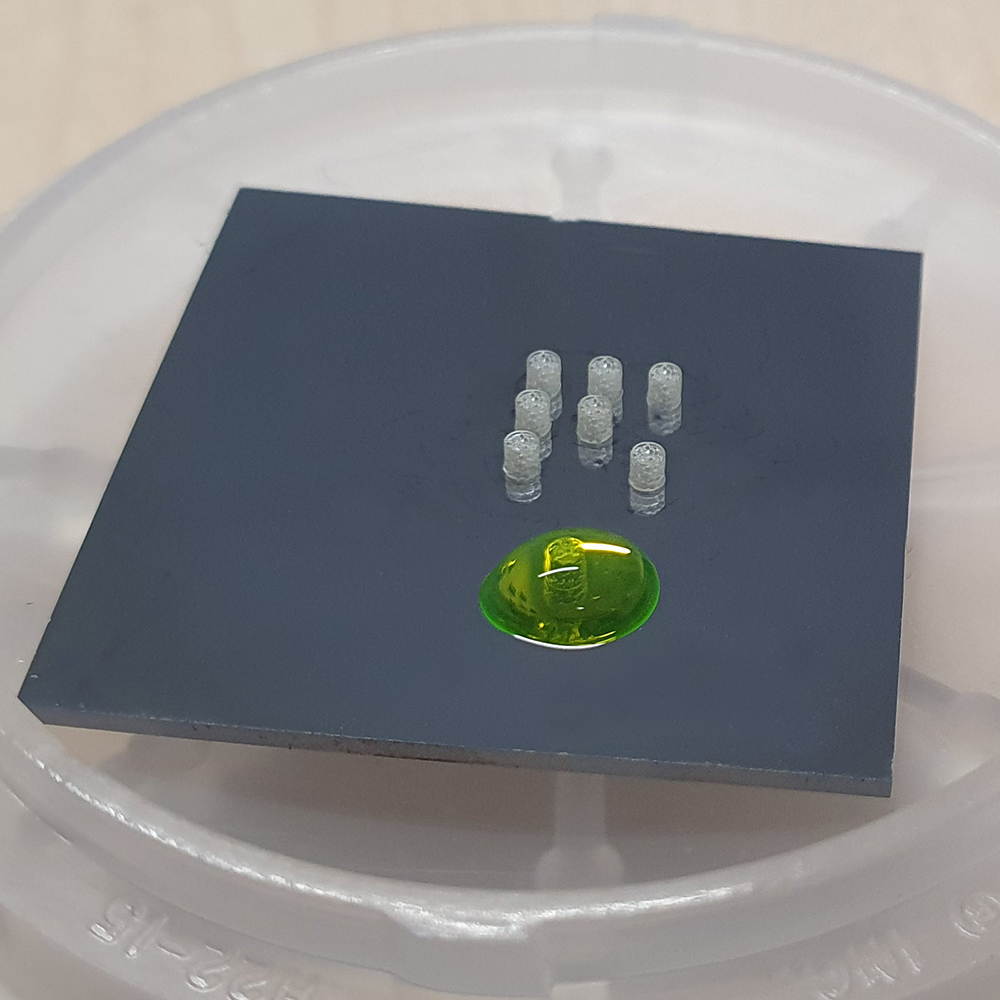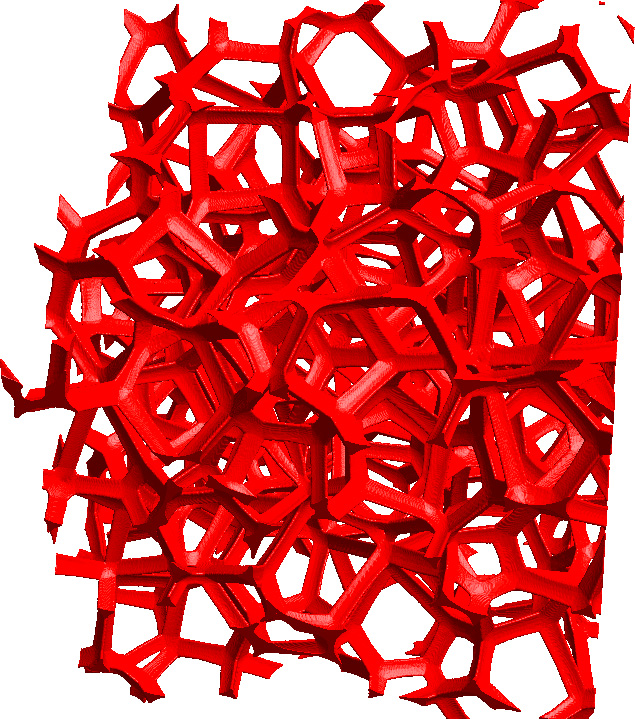The separation of living cells is a central challenge for many biotechnological processes. In the project »MaTBiZ« (German acronym for »Microstructure Design and Additive Manufacturing of a Chromatography Column for the Separation of Biological Cells«), we are developing technologies and methods to enable these processes by using additively manufactured, optimized filter media.
»MaTBiZ« – Using Digital Twins to Better Understand Separation Processes of Biological Cells
Microstructure Design and Additive Manufacturing of a Chromatography Column for the Separation of Biological Cells.
The current raw material situation and the transition to the post-fossil age require saving energy and resources more than ever. New processes and techniques are essential for this. For many processes in the biotechnological and pharmaceutical sectors, it is crucial that basic bio-materials are available. In obtaining these substances, processes for separating cells play a crucial role. Digital twins and innovative 3D printing processes support the development of an optimized separation system.
Separating Living Cells Through Filter Media
When separating living cells, for example from a blood sample, it is important that the cells are not damaged or even destroyed by the process. The cell viability – that is, the number of living cells in a cell population – should therefore be very high. We support the development of such separation processes with mathematical modeling and simulation. The resulting digital twins help to understand the separation process more precisely and to exploit optimization potential in the use of filter media. Additive manufacturing processes allow the improved filter media to be manufactured and tested directly.
The separation medium has optimal properties when a high separation efficiency with a high cell viability is achieved at the same time as a high overall throughput.
The project »MaTBiZ« thus contributes to innovative preliminary research: we develop models and simulation tools as well as high-precision additive manufacturing methods for new applications. The goal here is to develop a system for separating cells that is:
- rationally designed
- cost-effective in application
- easily scalable
- quickly transferable to other cell types.
Simulation – 3D model – Experiments
In the first step, we digitally model the microstructure of the separation medium and simulate the transport as well as the interaction of living cells, i.e. corresponding cell particles, with a functionalized surface.
Based on the simulations, we evaluate the microstructure and identify possible optimization potentials. A (stochastic) modeling makes it possible to quickly adapt the structure to desired properties and to analyze many characteristics of the microstructures (strut shape, pore size distribution, internal surface). One can also consider designs which can not be manufactured yet or which deviate strongly from previous designs.
A suitable parameterization of the microstructure enables us to investigate the influence of individual parameters on the target variables and to provide an accurate description of the geometry for 3D printing. Different properties of individual designs can thus also potentially be combined with each other (e.g. in layers) or merged into each other, providing a further opportunity to optimize the filter medium.
With the aid of 3D printing processes, digital microstructures that produce promising results in the simulations can be produced as prototypes with high fidelity. After suitable functionalization of the surface, these can be used in experiments to compare the simulation results with reality.
Interdepartmental Expertise
In the project »MaTBiZ«, we combine methods and competences from different research areas. For this reason, three departments of the Fraunhofer ITWM are involved in the project, each contributing their respective expertise:
Example: Filter Media With Foam Structure
In this project, we are looking at foam-like filter media, because of their high connectivity, which makes them highly suitable for 3D printing. In previous work by the department »Image Processing« in collaboration with Prof. Dr. Claudia Redenbach's chair at RPTU Kaiserslautern-Landau, we have so far investigated the modeling of realistic distributions of cell shape and size.
Preliminary Research on the Separation of Cells
If different cell types of a cell culture are to be separated from each other, a selection procedure is required that can distinguish between at least two cell populations. Systems that realize cell separation in flow-through channels simplify the handling and scalability of such separation problems. Here, the department »Flow and Material Simulation« contributes its experience from the project AMSCHA.
Simulation of Flow and Cell Separation
The simulation of flow through porous structures and the adhesion of cells to a functionalized surface can be implemented on different scales and with different methods. Previous research investigating this phenomenon has mostly considered the interaction of a single cell or particle with a (flat) surface. In the BMBF project AMSCHA, we have investigated the adhesion of cells to a functionalized surface in deterministic and stochastic microstructures using simulations. »MaTBiZ« will further build on these findings.
3D Printing Validates Microstructure Simulation
Microstructures that result from numerical optimization can only be additively manufactured in a meaningful way. The additive process must be able to faithfully realize both the relevant pore sizes of less than 100 μm and wall thicknesses in the range of a few μm. The only method that currently meets these criteria is 3D laser lithography using two-photon polymerization. This expertise is contributed by our department »Materials Characterization and Testing«. 3D printing also validates our simulations in the project »ViDestoP« (Virtual Design Chain and Stochastic Prototyping of Nonwovens).
Project Duration and Funding
The project is scheduled to run for 14 months (until December 31, 2023) and is funded by the Ministry of Science and Health of Rhineland-Palatinate with 390,000 euros. The research runs within the framework of the High Performance Center Simulation and Software Based Innovation.



